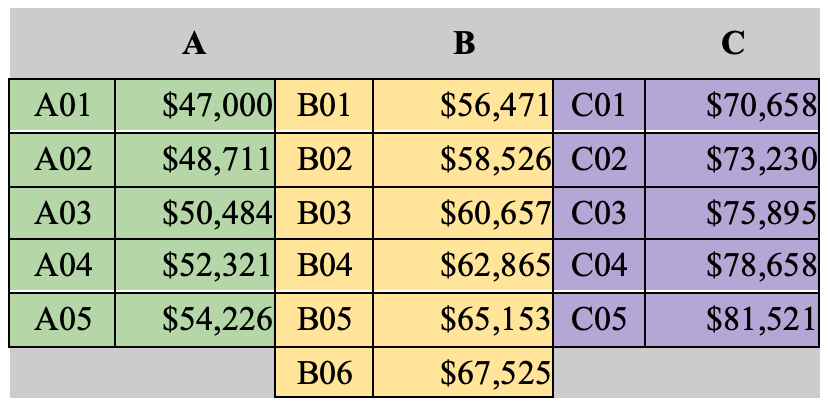Paying teachers based on merit
Effective teachers gravitate toward districts where they can be rewarded, resulting in students experiencing higher rates of growth
Last month, the school board voted to eliminate merit pay for teachers. The primary rationale from the compensation committee was teacher dissatisfaction with the existing evaluation system. But instead of fixing the problems, they scrapped the whole process, leaving us with a system virtually guaranteed to be unfair. A teacher who works hard, is an amazing educator, and causes her students to excel will be paid less than a less effective teacher in a higher position on the seniority chart.
Study on student growth in Wisconsin merit-pay schools
Act 10 caused Wisconsin to become a natural laboratory for the effects of merit pay, as some districts took advantage of the flexibility it offered and others did not. The Wisconsin Institute of Law and Liberty has a good summary of a Yale School of Management study of post-Act-10 Wisconsin. The study found that effective teachers gravitated toward districts where they could be rewarded and that those districts’ students experienced higher rates of growth. Those districts also tended to see their less effective teachers leave, with the remaining teachers increasing their effort.
Teacher union support for merit pay
Even before Act 10, the Wisconsin Teachers Union, WEAC, recommended “instituting performance pay to recognize teaching excellence”. It proposed a “performance pay system [that] would replace the current step-based salary schedule with career ladders which provide highly effective teachers with opportunities to obtain additional compensation”. Criteria for teacher evaluation included “creating a quality learning environment” and “effective teaching”.1
Flexible for hiring, rigid for retention
Although teachers still advance in salary using pre-Act-10-style, seniority-based, fixed steps, the new compensation plan is flexible regarding initial placement on the ladder, allowing teachers in high-demand roles like teaching technical classes to be paid a market rate.
Additionally, teachers receive a stipend when filling specialized roles such as teaching a dual-credit course. It’s a valuable incentive to get degrees required for our students to get college credit in high school.
That same kind of incentive structure is missing, however, for the everyday job of being a great teacher. Teachers who consistently excel at educating their students lack financial reinforcement to continue their efforts and stay in our district. Conversely, teachers who underperform, except for the extreme cases of performance improvement plans, lack financial back pressure to improve or move on.
Big pay increases
The plan’s salary increases are substantial. The Board approved a 14% pay increase over 3 years. Our teacher compensation is 7.21% above the state average.2 The current inflationary cycle presents a missed opportunity to align salaries with the various positions’ market rates without a reduction in pay for any teacher.
I would have liked to see the compensation committee apply research findings and analysis of other districts to our district regarding how merit pay can better serve our students. Neither the report nor the presentation had any discussion of alternatives, only a decision to eliminate merit pay. It was a missed opportunity to build on the virtues of the compensation plan to better align our salaries with our actual needs to hire and retain highly talented staff with the skillsets we need.
Related post
In need of a Computer Science upgrade
The current seniority-pay system has been too inflexible to attract the educator talent needed to teach modern computer science. A merit-based pay system will provide the flexibility to better prepare our students for the excellent career paths in tech available to them.
This post was updated to add stipends and the WEAC recommendation and to use 2024 compensation levels.
Ford, M. A Modern Teacher Compensation System for Wisconsin. Badger Institute. Citing: Moving Education Forward: Bold Reforms. (2011). Madison, WI: Wisconsin Education Association Council. (archived copy)
Sheboygan Falls School District Retention Report, July 15, 2024, Salary/Benefits Comparison (p. 9). Sum of the salary and benefit, local divided by state:
Sheboygan Falls: salary $57,978, benefit $30,818
Wisconsin: salary $57,279, benefit $25,548





